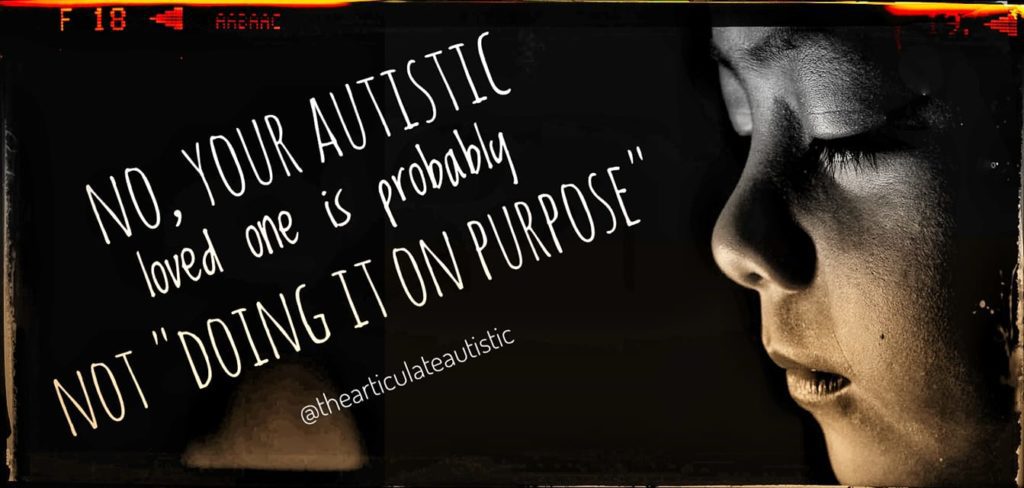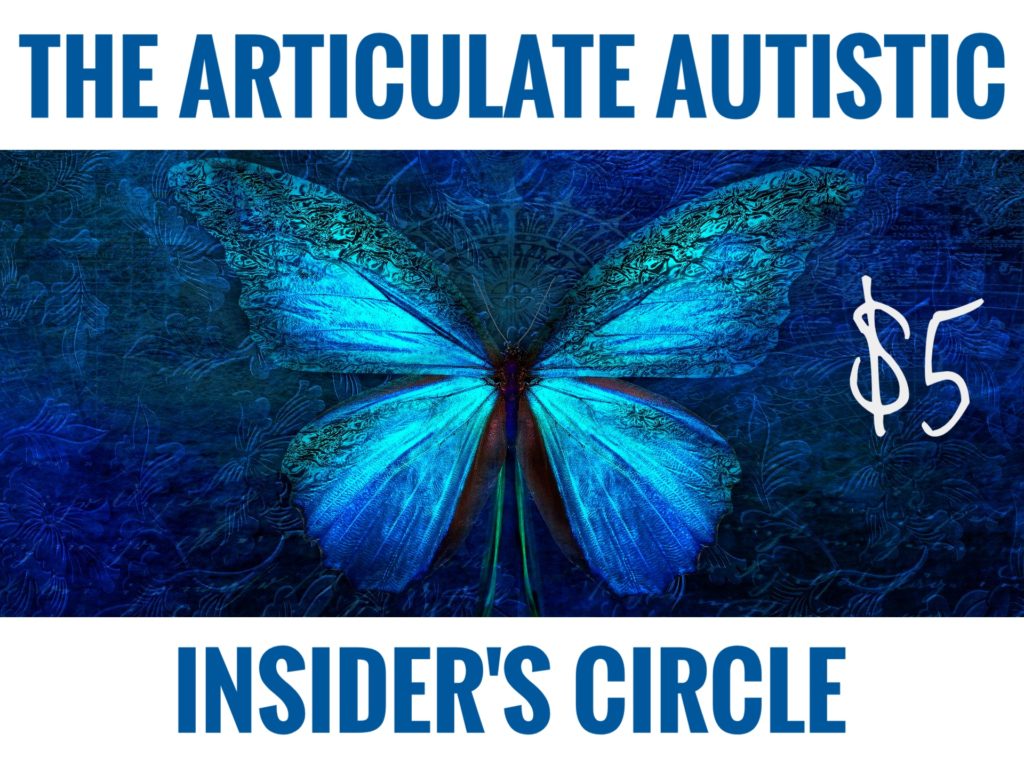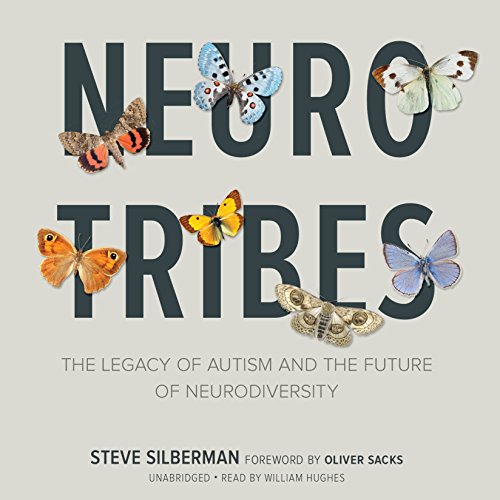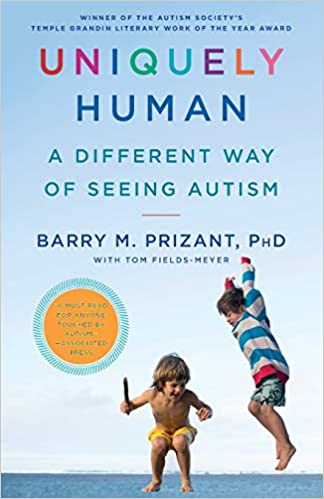Your Autistic Loved One Is Probably Not “Doing It on Purpose”

This post is a direct follow-up to yesterday’s post about purposeful action but an outcome entirely different than what is expected.
In this one, I’d like to talk about actions that are taken as purposefully malicious (or maybe just mischievous) by non-autistic people that have absolutely no ulterior motives whatsoever.
Here’s a list:
Action: Stimming.
Non-autistic interpretation: Doing it for attention.
Autistic intent: Emotional regulation and/or indication of distress.
Action: Sighing.
Non-autistic interpretation: Rudeness, boredom, or disinterest.
Autistic intent: Emotional regulation and trying to achieve homeostasis in the brain.
(Article continues below.)
The best way to improve communication with your autistic loved one is to understand how your autistic loved one’s mind works! Intentions, motivations, and personal expressions (facial expressions or lack thereof, body language, etc.), are often quite different in autistic people than they are in neurotypical people.
Experience a better understanding of your autistic loved one by reading books about life from an autistic perspective as well as stories that feature autistic characters. You’ll have so many “Ah ha!” moments and start seeing your autistic loved one in a different light (and you’ll have a better understanding of their behaviors, which you may have been misinterpreting up until now).
Books I recommend for a better understanding of your autistic loved one:
Action: Meltdown.
Non-autistic interpretation: Being manipulative to get what they want.
Autistic intent: Release the incredible anxious tension after holding back a volcano of it for hours. Also, there is no “intent” here. This is a neurological event that can no more be stopped midway than a seizure.
Action: Wearing earbuds or ear defenders.
Non-autistic interpretation: Rudeness, snobbishness, disinterest.
Autistic intent: Stop the overwhelmingly loud noises.
Action: Repeating words.
Non-autistic interpretation: Doing it to annoy others.
Autistic intent: To self-soothe, regulate emotions, process verbal instructions, learn how to communicate verbally.
Action: Dropping, walking into, or breaking something.
Non-autistic interpretation: Blatant disregard for the property of others.
Autistic intent: Poor proprioception, balance, and coordination, which are all completely uncontrollable.
Action: Being blunt. For example, “Do you like my new perfume?” “No, Carol. It’s too strong.”
Non-autistic interpretation: Carelessness about Carol’s feelings and a purposeful dig at her as a person.
Autistic intent: They answered the question honestly.
Action: Forgetting birthdays, anniversaries, etc.
Non-autistic interpretation: Selfishness.
Autistic intent: There is no intent. Many of us have terrible memories.
Action: Forgetting a face.
Non-autistic interpretation: Selfishness, not caring about the person.
Autistic intent: There is no intent. Many of us have face blindness.
Follow me on Instagram.
Want downloadable, PDF-format copies of these blog posts to print and use with your loved ones or small class? Click here to become a Patreon supporter!







